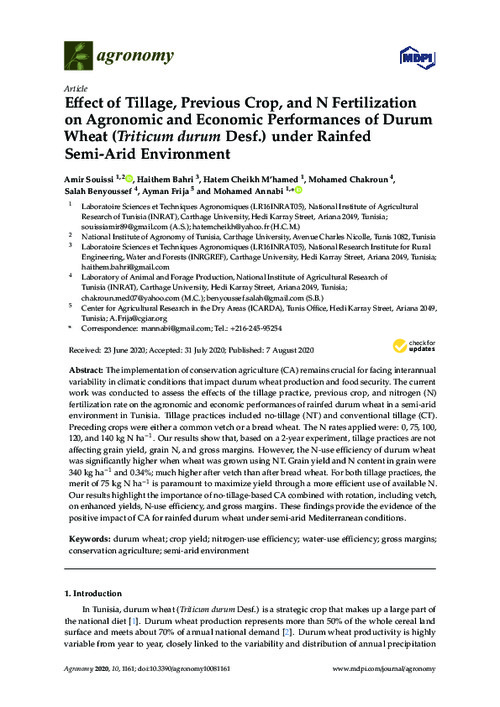Effect of Tillage, Previous Crop, and N Fertilization on Agronomic and Economic Performances of Durum Wheat (Triticum durum Desf.) under Rainfed Semi-Arid Environment
Abstract
The implementation of conservation agriculture (CA) remains crucial for facing interannual variability in climatic conditions that impact durum wheat production and food security. The current work was conducted to assess the effects of the tillage practice, previous crop, and nitrogen (N) fertilization rate on the agronomic and economic performances of rainfed durum wheat in a semi-arid environment in Tunisia. Tillage practices included no-tillage (NT) and conventional tillage (CT). Preceding crops were either a common vetch or a bread wheat. The N rates applied were: 0, 75, 100, 120, and 140 kg N ha−1. Our results show that, based on a 2-year experiment, tillage practices are not affecting grain yield, grain N, and gross margins. However, the N-use efficiency of durum wheat was significantly higher when wheat was grown using NT. Grain yield and N content in grain were 340 kg ha−1 and 0.34%; much higher after vetch than after bread wheat. For both tillage practices, the merit of 75 kg N ha−1 is paramount to maximize yield through a more efficient use of available N. Our results highlight the importance of no-tillage-based CA combined with rotation, including vetch, on enhanced yields, N-use efficiency, and gross margins. These findings provide the evidence of the positive impact of CA for rainfed durum wheat under semi-arid Mediterranean conditions

